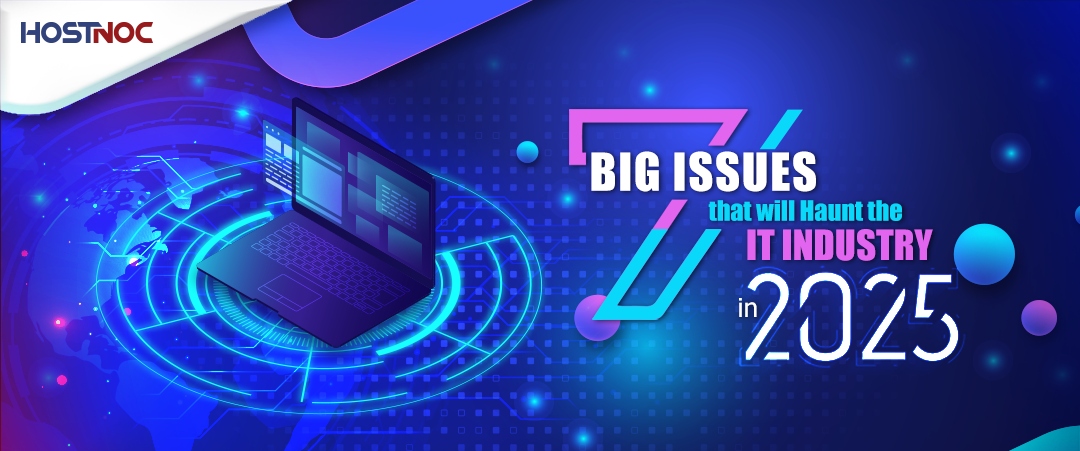Blogs
- Ultimate Guide To Cloud Native Application Protection Platform
- What are Cloud Native Applications?
- What is a Cloud Native Application Protection Platform (CNAPP)?
- What are the Key Components of Cloud Native Application Protection Platform?
- Why are Cloud Native Application Protection Platform Important?
- What Problems Does Cloud Native Application Protection Platform Solve?
- What are the Benefits of Cloud Native Application Protection Platform?
- What are the Biggest Challenges In Cloud Native Application Protection Platform Implementation?
Ultimate Guide To Cloud Native Application Protection Platform
What are Cloud Native Applications?
Before we dive into cloud native application protection platforms, it is important to define what we mean by cloud native applications. Cloud native applications are software applications designed to run on cloud infrastructure such as containers or serverless architectures. These applications are typically built using modern application development practices such as microservices and DevOps and are often deployed using tools like Kubernetes.
What is a Cloud Native Application Protection Platform (CNAPP)?
A Cloud Native Application Protection Platform (CNAPP) is a set of security tools and services designed to secure cloud native applications. Cloud Native Application Protection Platforms are designed to protect the entire application stack including the application code, containers, serverless functions and the cloud infrastructure.
The goal of Cloud Native Application Protection Platforms is to provide a comprehensive security framework that can identify and prevent attacks on cloud native applications.
What are the Key Components of Cloud Native Application Protection Platform?
Some of the key components of cloud native application programing platform includes:
Runtime Protection:
Cloud Native Application Protection Platforms provide runtime protection to detect and prevent attacks in real-time. This includes detecting anomalies in application behavior, monitoring network traffic and preventing attacks like SQL injection, cross-site scripting and other common attack types.
Container and Serverless Protection:
Cloud Native Application Protection Platforms also provide protection for containers and Hostnoc serverless functions. This includes identifying vulnerabilities in container images, detecting malicious code in serverless functions and preventing attacks against the container or serverless environment.
Infrastructure Protection:
Cloud Native Application Protection Platforms protect the underlying cloud infrastructure by providing security controls such as network security, access controls and server monitoring.
Compliance:
Cloud Native Application Protection Platforms help organizations maintain compliance with industry and regulatory requirements by providing tools for data protection, auditing and reporting.
Read more: Top 10 Cloud Security Challenges, According To SUSE Survey
Why are Cloud Native Application Protection Platform Important?
As more organizations move their applications to the cloud, the threat landscape has become more complex. Attackers are constantly looking for vulnerabilities in cloud native applications to exploit. Cloud Native Application Protection Platforms provide a comprehensive security framework designed specifically for cloud native applications. By implementing a Cloud Native Application Protection Platforms, organizations can ensure that their cloud native applications are secure and compliant.
What Problems Does Cloud Native Application Protection Platform Solve?
Cloud native application protection platforms (CNAPPs) are designed to solve several problems associated with securing cloud-native applications. Here are some of the key problems that a Cloud Native Application Protection Platforms solves:
Protecting cloud-native applications from cyber threats:
Cloud-native applications are vulnerable to various cyber threats such as DDoS attacks, SQL injection, cross-site scripting and other common attack types. Cloud native application protection platforms provide runtime protection to detect and prevent attacks in real-time, protecting the entire application stack including the application code, containers, serverless functions and the cloud infrastructure.
Ensuring compliance with industry and regulatory requirements:
Organizations must comply with industry and regulatory requirements such as HIPAA, PCI DSS, GDPR and others when they use cloud services. Cloud native application protection platforms help organizations maintain compliance by providing tools for data protection, auditing and reporting.
Automating security controls:
As the number of cloud-native applications increases, manually securing them becomes difficult and time-consuming. Cloud Native Application Protection Platforms provide automated security controls, reducing the need for manual intervention and allowing security teams to focus on more strategic initiatives.
Providing a scalable security solution:
As cloud-native applications grow, the need for security grows as well. Cloud native application protection platforms are designed to scale as applications grow, making them an ideal security solution for organizations with rapidly growing cloud-native application environments.
Protecting container and serverless environments:
Containers and serverless functions are essential components of cloud-native applications. Cloud Native Application Protection Platforms provide protection for containers and serverless functions including identifying vulnerabilities in container images, detecting malicious code in serverless functions and preventing attacks against the container or serverless environment.
Cloud Native Application Protection Platforms solve several problems associated with securing cloud-native applications including protecting against cyber threats, ensuring compliance, automating security controls, providing a scalable security solution and protecting container and serverless environments. By implementing a cloud native application protection platform, organizations can ensure that their cloud-native applications are secure, compliant and scalable.
Read more: 7 Server Trends You Should Keep an Eye on in 2025
What are the Benefits of Cloud Native Application Protection Platform?
Cloud Native Application Protection Platforms also provide other benefits including:
Automation:
Cloud Native Application Protection Platforms provide automated security controls, reducing the need for manual intervention and allowing security teams to focus on more strategic initiatives.
Scalability:
Cloud Native Application Protection Platforms are designed to scale as applications grow, making them ideal for organizations with rapidly growing cloud native application environments.
Flexibility:
Cloud Native Application Protection Platforms are designed to work with a variety of cloud platforms including public cloud providers and private clouds, making them a flexible security solution.
What are the Biggest Challenges In Cloud Native Application Protection Platform Implementation?
Cloud Native Application Protection Platform (CNAPP) can bring numerous benefits to an organization but there are also some challenges that organizations may face during the implementation process.
Integration with existing tools and processes:
Implementing a cloud native application protection platform may require integrating with existing tools and processes that are already in place within an organization. This can be a challenge, particularly if the cloud native application protection platform uses different protocols or standards than the existing tools. Careful planning and coordination are required to ensure smooth integration.
Complexity of cloud-native application environments:
Cloud-native application environments can be complex, with multiple layers and components. This complexity can make it challenging to implement a cloud native application protection platform, particularly if the organization is still in the early stages of cloud adoption. Organizations may need to invest time and resources in understanding their cloud-native application environments before implementing a cloud native application protection platform.
Need for specialized skills:
Enforcing a cloud native application protection platform may require specialized skills and expertise, particularly in the areas of cloud security and DevOps. Organizations may need to hire or train staff to acquire the necessary skills.
Cost:
Cloud native application protection platform implementation can be costly, particularly if the organization needs to purchase new hardware or software, or hire additional staff. Organizations must carefully evaluate the cost-benefit of implementing a cloud native application protection platform to ensure that the benefits outweigh the costs.
Performance impact:
Cloud native application protection platforms can have a performance impact on cloud-native applications. Organizations must carefully evaluate the impact on performance and ensure that the cloud native application protection platform does not impact the user experience.
Maintenance:
Cloud native application protection platform needs continuous maintenance, including updating and patching the platform. Organizations must have the resources and expertise to maintain the cloud native application protection platform to ensure that it remains effective over time.
Did this guide help you know everything you need to know about cloud native application protection platforms? Share your feedback with us in the comments section below.
When reliability and speed matter, trust a server that’s dedicated to YOU!
| Cores | RAM | Storage | Location | Monthly Price | Link |
|---|---|---|---|---|---|
| AMD Opteron 3365 2.3GHz 8c/8t | 16 GB DDR3 | 2x 1 TB (HDD SATA) | Dusseldorf, Germany | $30.95 /month | Buy Now |
| Intel Atom C2750 2.4 GHz 8 cores | 16GB DDR3 | 1 x 1TB HDD | Paris, France | $34.99 /month | Buy Now |
| Intel Xeon D-1531 2.2GHz 6c/12t | 32 GB DDR4 | 2x 256 GB (SSD SATA) | Paris, France | $44.50 /month | Buy Now |
| Xeon E3-1230 v3 3.3 GHz 4c/8t | 32 GB DDR3 | 2 × 2 TB (HDD SATA) | Montreal, Canada | $45.95 /month | Buy Now |
| Intel Core i7-4790K 4GHz 4c/8t | 32 GB DDR3 | 2x 1 TB (HDD SATA) | Dusseldorf, Germany | $48.95 /month | Buy Now |
| Intel Xeon E3-1270 v2 3.5GHz 4c/8t | 32 GB DDR3 | 1x 1 TB (SSD SATA) | Amsterdam, Netherlands | $56.95 /month | Buy Now |
| Intel X5670 2.93 GHZ - 12 Cores / 24 Threads | 16GB DDR3 | 1 x 240 GB SSD | Florida | $74.99 /month | Buy Now |
What is a Cloud Native Application Protection Platform (CNAPP)?
A Cloud Native Application Protection Platform (CNAPP) is a comprehensive security solution designed to protect cloud-native applications from security threats. It provides visibility, real-time protection and compliance for applications built and deployed in cloud environments.
The cloud native application protection platform ensures that cloud-native applications are secure throughout their lifecycle, from development to production, by identifying vulnerabilities and threats and responding to them proactively.
How does Cloud Native Application Security differ from traditional application security?
Cloud native application security is specifically tailored to the unique characteristics of cloud environments. Unlike traditional application security, which often focuses on on-premises infrastructures, cloud-native security accounts for the scalability, dynamic nature and continuous deployment of cloud-native applications.
This means it offers real-time monitoring, automated threat detection and proactive protection in cloud environments, ensuring comprehensive security across containers, microservices and serverless architectures.
What are the key features of Cloud Native Application Protection Platform?
Cloud native application protection platforms offer a range of features including continuous vulnerability scanning, runtime protection, risk assessment and compliance management. It supports automated threat detection, provides real-time insights into security risks and ensures secure development processes.
The platform is specifically designed to address the challenges faced by cloud-native applications, ensuring they are protected from a variety of security threats.
Why is cloud native security important for modern applications?
Cloud native security is critical because modern applications are increasingly built on cloud platforms that are complex, dynamic and highly distributed. These environments introduce new security risks such as misconfigurations, vulnerabilities in containers or microservices, and exposure to data breaches.
A robust cloud-native security solution like cloud native application protection platforms ensures that these applications are resilient against evolving threats and helps organizations maintain compliance with industry standards.
How can Cloud Native Application Protection Platform improve my organization’s security posture?
By implementing cloud native application protection platforms, your organization can significantly enhance its cloud-native application security posture. The platform provides continuous monitoring for vulnerabilities, automated detection of security risks and quick remediation measures.
It also helps ensure compliance with industry regulations, reduces manual intervention in security processes and offers visibility into potential threats, enabling your team to respond proactively to incidents before they become major issues.
Muhammad Osama
Featured Post
How Cloud Computing Essentials Unlock Benefits for Businesses?
Table of Contents Understanding Cloud Computing Essentials Benefits of Cloud Computing Essentials 1. Cost Efficiency 2. Scalability and Flexibility 3. Improved Collaboration and Accessibility 4. Enhanced […]
10 Cloud Cost Optimization Mistakes You Should Never Make
Cloud Cost Optimization offers tremendous benefits in scalability, flexibility and cost-efficiency. However, it’s easy to make mistakes that can lead to unexpected costs swelling your cloud […]
How Small and Mid-size Businesses Can Make The Most of the Cloud Without Getting Stuck?
According to Accenture data, Only 44% of businesses have adopted the cloud globally. This means that there are still 56% of businesses who have not adopted […]







